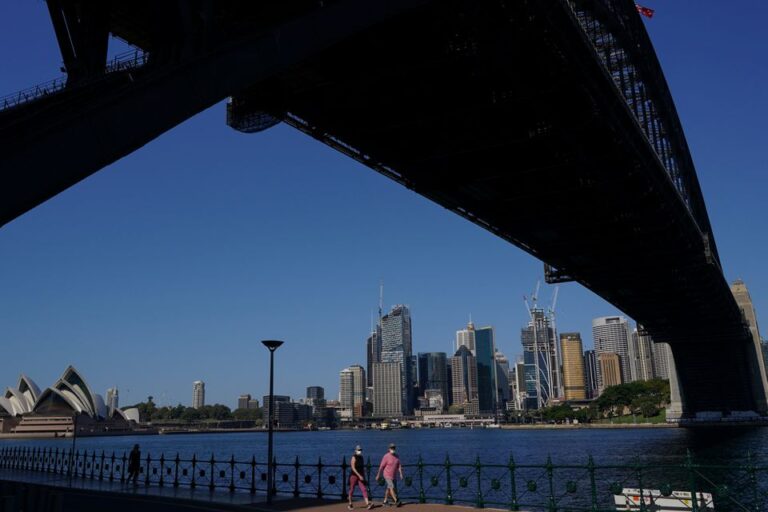
SYDNEY, (Reuters) – Authorities in Australia’s New South Wales, the epicentre of the country’s biggest coronavirus outbreak, said on Monday daily infections were expected to peak next week, as they look to speed up immunisations ahead of easing restrictions.
Australia is trying to contain a third wave of infections that has locked down its two largest cities, Sydney and Melbourne, and its capital Canberra, putting more than half its 25 million population under strict stay-at-home restrictions.
New South Wales Premier Gladys Berejiklian said the government’s modelling revealed the state would require its highest number of intensive care beds in early October, with “additional pressure on the system” in the next few weeks.
Daily cases in Sydney’s worst-affected suburbs are expected to rise to as high as 2,000 until the middle of this month, the modelling showed.
“I do want to qualify that to say that modelling depends on a number of things, a number of variables … if too many of us do the wrong thing, there are too many super-spreading events, we could see those numbers higher,” Berejiklian said during a media briefing in Sydney, the state capital.
A total of 1,071 COVID-19 cases are currently in hospitals, with 177 people in intensive care (ICU), 67 of whom require ventilation. Officials have said they had quadrupled ICU beds to about 2,000 in the state early last year to handle the pandemic.
The state detected 1,281 new cases on Monday, most of them in Sydney, down from 1,485 a day earlier. Five new deaths were recorded.
Victoria state, which includes Melbourne, reported 246 new cases on Monday, its biggest daily rise of the year.
Despite the recent outbreaks, Australia’s coronavirus numbers have remained relatively low at around 63,000 cases and 1,044 deaths.
VACCINE RUSH
Officials are trying to accelerate the vaccine rollout to help minimise deaths and hospitalisations with the government pledging more freedom of movement once 70-80% of the population aged over 16 is vaccinated.
Just over 38% of Australia’s adult population has been fully vaccinated, with the country expected to reach 70% by early November based on current rates.
Last week, Australia entered into vaccine swap deals with Britain and Singapore for a total of around 4.5 million doses of the Pfizer-BioNTech vaccine, double this month’s supply.
Nearly half a million doses, the first batch of shipments, arrived overnight.
“There will be another set of flights in a couple of days, but we’ll pretty much be getting a million of the four million every week over the next four weeks,” Lieutenant General John Frewen, head of the vaccination taskforce, told broadcaster ABC.
Under the vaccine swap deals, Australia will return equivalent numbers of Pfizer-BioNTech vaccines to Britain and Singapore later this year.
Frewen said one million doses of Moderna (MRNA.O) will also reach Australia in “a week or so”, becoming the third vaccine to join the rollout along with Pfizer (PFE.N) and AstraZeneca (AZN.L) shots.






